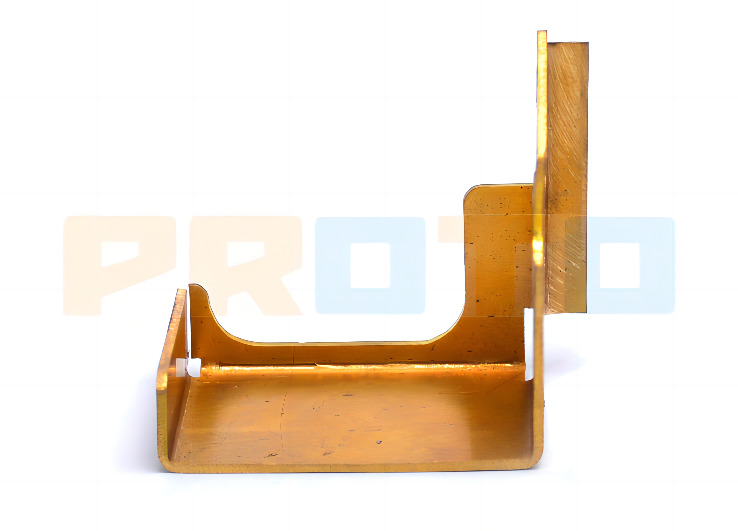Sheet metal assembly is a crucial skill for any craftsman working with metal. The ability to create seamless and strong joints in sheet metal can make or break a project. In this blog post, we will explore the top techniques for mastering sheet metal assembly methods, providing you with the knowledge and skills to take your craftsmanship to the next level.
When it comes to sheet metal assembly, choosing the right materials is essential. Understanding the different types of sheet metal materials available, such as steel, aluminum, and copper, is the first step in selecting the best material for your project. Factors to consider when selecting materials for assembly projects include strength, corrosion resistance, and cost.

A clean and organized workspace is crucial for successful sheet metal assembly. Having the right tools and equipment on hand, such as a metal brake, shears, and clamps, will ensure that you can work efficiently and accurately. By setting up your workspace properly, you can avoid costly mistakes and achieve professional results.
Accurate measuring and cutting are key components of successful sheet metal assembly. Techniques such as using a scribe and square for precise measurements, and using snips or shears to cut the metal, can help you achieve clean edges and tight fits. Avoid common mistakes such as incorrect measurements or using dull cutting tools to ensure a smooth assembly process.
Bending and folding sheet metal require skill and precision. There are different methods for bending and folding sheet metal, including using a press brake or a hand brake. Tips for achieving precise bends and folds in your projects include using a bending calculator to determine the correct bend allowance and practicing on scrap pieces before working on your final project.
There are various joining methods available for sheet metal assembly, including welding, riveting, and adhesives. Each joining method has its pros and cons, depending on the project requirements. Understanding the strengths and limitations of each method will help you choose the best option for your specific assembly needs.
Fasteners play a crucial role in sheet metal assembly, providing strength and stability to the joints. Different types of fasteners, such as screws, nuts, bolts, and rivets, can be used depending on the project requirements. Tips for selecting the right fasteners include considering the material thickness, load requirements, and accessibility for installation.
The finishing touches on a sheet metal project can make all the difference in the final result. Achieving a professional finish requires attention to detail and the right techniques, such as deburring sharp edges, smoothing rough surfaces, and applying a protective coating. By taking the time to finish your project properly, you can enhance its overall appearance and durability.
Like any craft, sheet metal assembly can come with its fair share of challenges. Common problems encountered during sheet metal assembly include warping, misaligned joints, and poor weld penetration. Tips for troubleshooting and resolving these issues effectively include adjusting welding settings, using a hammer and dolly for straightening, and practicing proper joint alignment techniques.
For experienced sheet metal workers looking to elevate their craftsmanship, advanced techniques can take their projects to the next level. This may include complex bending patterns, intricate welding techniques, or innovative joint designs. By pushing the boundaries of traditional methods and experimenting with new approaches, craftsmen can achieve truly unique and impressive sheet metal assemblies.
Prioritizing safety in sheet metal assembly is non-negotiable. Working with sharp edges, high temperatures, and heavy machinery requires adherence to safety protocols to prevent accidents and injuries. Safety tips and precautions to follow during the assembly process include wearing appropriate personal protective equipment, securing workpieces properly, and maintaining a clean and clutter-free workspace.
Real-life examples of successful sheet metal assembly projects can provide valuable insights and inspiration for craftsmen. By showcasing challenging assembly situations and the lessons learned from them, case studies offer a glimpse into the skills and techniques required for achieving flawless assemblies. Studying these examples can help craftsmen troubleshoot their own projects and improve their overall craftsmanship.
Q&A with Expert In this section, we will address commonly asked questions about sheet metal assembly methods and provide expert insights and advice for achieving flawless assemblies. From tips on choosing the right materials to troubleshooting common issues, our expert will share their knowledge and experience to help you enhance your sheet metal assembly projects.
In conclusion, mastering sheet metal assembly methods is a valuable skill for any craftsman working with metal. By understanding the importance of choosing the right materials, preparing your workspace, and utilizing the top techniques for measuring, cutting, bending, folding, and joining sheet metal, you can elevate your craftsmanship to new heights. Remember to prioritize safety, pay attention to the finishing touches, and be open to experimenting with advanced techniques to achieve professional results in your sheet metal assembly projects. Apply the techniques learned in this blog post to your future projects and watch as your skills and confidence grow with each assembly.